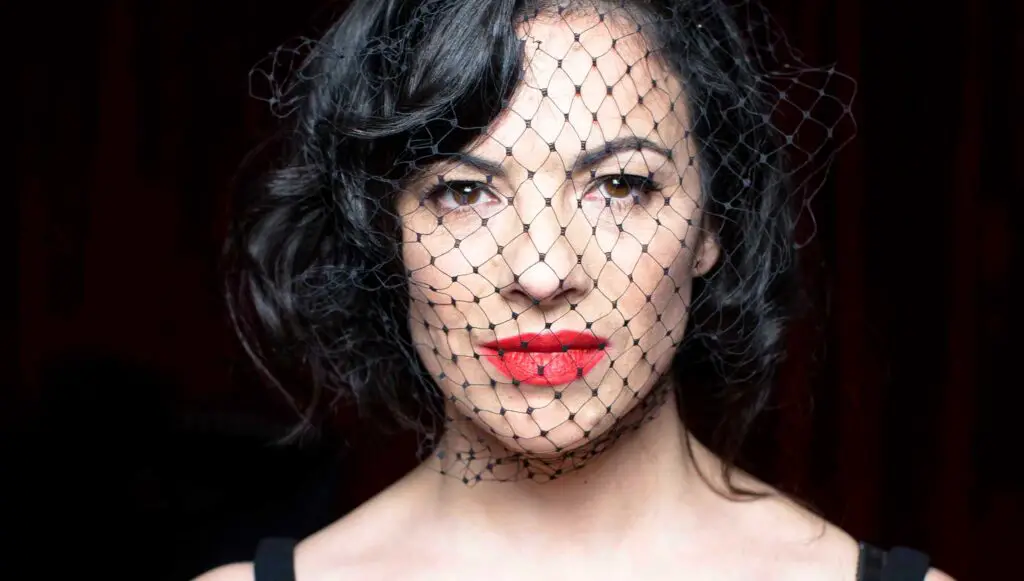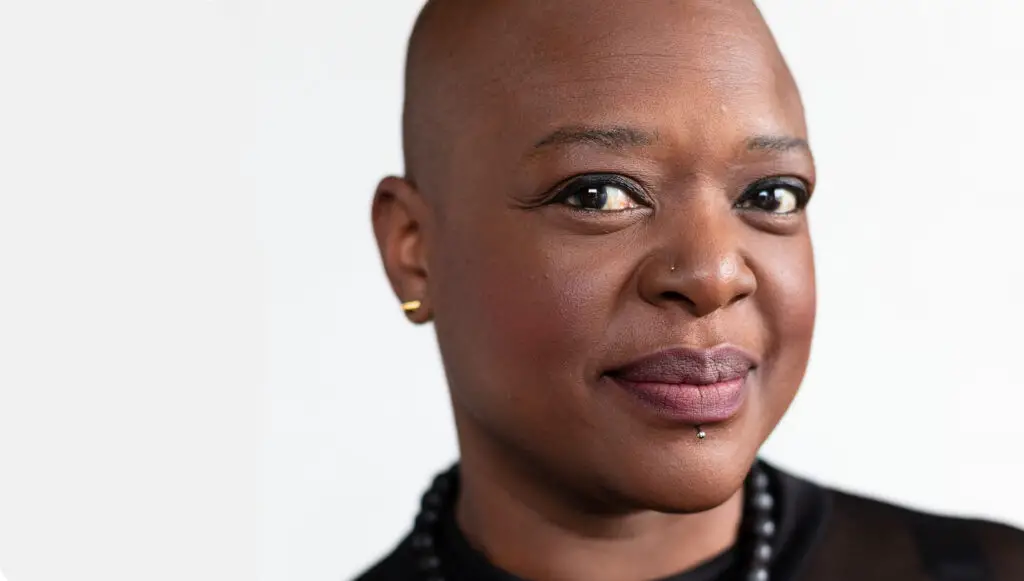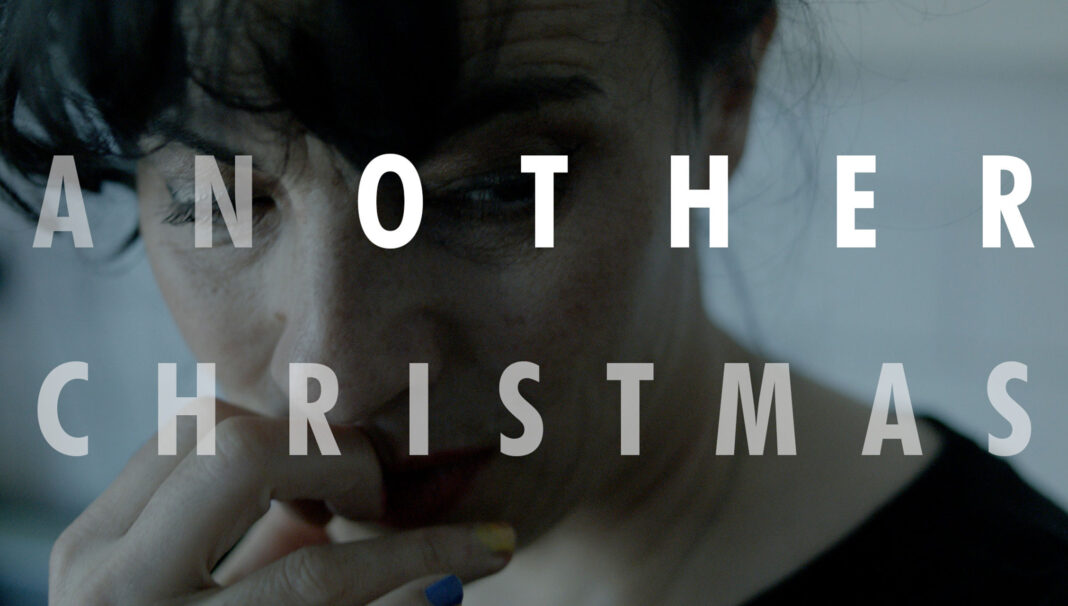As Christmas draws closer and so too does the darkest day of the calendar year, it’s an opportunity to reflect on whether this time truly does mean comfort and joy for all. ‘Another Christmas’, a short film featuring a host of inventive musical performances and snapshots into how different communities spend their Christmas Day, seeks to capture that complexity while still finding a way to connect during the festive season. We sat down with Creative Director Laura Ducceschi to discuss how she developed ‘Another Christmas’ alongside Music Beyond Mainstream and filmmaker Samona Olanipekun, why collaborating with female artists can be so rewarding, and how music’s relationship with Christmas might be a deceptively complicated one.
How did the concept for Another Christmas come about?
It was initially called ‘A Dark Christmas’ and the purpose was to consider the other voice. When that was originally penned, it had the tagline: “We do not buy the myth. We are all the others. We are the others together.” You get this singular message of Christmas which is excess, happy families, lots of alcohol, lots of eating, lots of money. And that only represents a smidgen of people because not only are we culturally diverse, but also some people have got awful families that reject them. They fight; they have no money; there’s a massive sense of failure; domestic violence is through the roof. It’s also literally the darkest point of the year.
The intention was to soothe and represent complicated feelings without being called a Bah Humbug or something. It was initially planned for the stage. I’m not interested in streaming so much: I work in the live game because I like the dynamic energy you get with live music – the sense of going to church and connection and intimacy. During lockdown, I started to feel that the themes of this project – isolation and anxiety and worry and feeling disconnected – were perhaps more relevant than ever. So how could we even get close to representing some of the energy of live performance? That’s when I started thinking about film.
Are there key themes you’re consistently trying to address in your work or does it vary from project to project?
Making new work is so hard. You get this idea that nags in your head and usually I try to ignore it because I know how hard it is and then something will push and push and push and eventually, it demands attention. It has to have a really, really good reason to exist. Exploring my own mind a little bit more this year, I realised, on reflection, that there’s always something really key and usually it’s representing the voice of someone or a group of people who aren’t being represented. I’ll start to think about that with “Who’s this helpful for? Why are we doing it? Who might be interested?” and then try to take the doors off a little bit.
I have worked for a couple of big arts institutions, but I really hate how class-orientated they are. And I mean that from the audiences to the staff, and I say it respectfully – it’s not a crime to be wealthy and upper-class – but art is for everyone. So it’s like, how do we open this up? What is it that we’re saying? And how do we make it more accessible and unapologetic in what it represents?
Many of the performances are tinged with melancholy, especially Camille O’Sullivan’s spoken-word rendition of ‘Fairytale of New York’. Was that a deliberate choice in terms of an alternative take on Christmas or have things like the pandemic changed your perception of Christmas?
Everybody went melancholic, right! Which is a reflection of what was going on but we also try not to be entirely melancholic because ultimately, the project is about connection. With ‘Fairytale of New York’, that song really reflected the spirit of this project. Camille performed it with [Shane] MacGowan each year when the Pogues did those big Brixton Academy shows, so she’s very, very familiar with it. But then Camille tried it in lots of different styles and she’s as good an actress as she is a musical performer.
Our project is about story and the words of the tracks are what tell the story, right? You take ‘Fairytale of New York’ and it starts hopefully, like “it’s going to be our year, babe.” Then obviously it meanders. I think we all probably go into Christmas with a little hope but then maybe you get splattered by your family dynamic or you realise you’ve lost your job because of the pandemic and you’ve got no money to put the heating on, or you just don’t do Christmas because you’re Muslim. So that performance became a nice container for the film’s journey.

Alongside the performances, the film provides snapshots into what Christmas looks like for different communities and celebrates everyone’s otherness. Why did you feel like it was important to touch on those particular stories?
We’ve re-skinned this project several times because lockdown went on and on and on, and we couldn’t be in the room together. This project was always about performance and about music telling the story of what other people’s Christmases are like. So we put it out there and invited people to respond by capturing their Christmas day. It’s not a film spending an hour focusing on one person; it’s literally snapshots. Obviously, in the finale there’s this big hug, the big soothe with ESKA and Duke Garwood which stands alone, but for everything else, it’s levelled out. Whether it’s the full recorded track that we cut between or the film sound, we tried to level it and take away any sense of hierarchy.
We see the gift exchange. We see the lady at the piano, we see the elderly man with the roses and then of course we see all the people in the pub. We’ve been reflective enough on loneliness already in the piece and so that’s a moment of just “You know, you’re alright. I’m alright.” A moment of exchange, a sense of sharing and coming together. Hopefully, it speaks to and connects with people about the other side of Christmas.
You’ve been quoted as saying that women are particularly good at collaborating. Why do you think that is?
I think there are very, very generous women in the arts. For a long time, it has been a boys game and every woman has her own personal journey but there’s a kind of acknowledgement of what that takes. I find women are very mutually supportive of each other. There isn’t a case of going “I’m the business and what I say goes”. All good artists have an amazing vision that drives their work so I’m not for any second saying they’re visionless, but they’re generally much less precious. There are a lot more conversations and listening and thinking and digesting.
I think when women make art, they really are prepared to run the risk of looking vulnerable. Which is a horrible experience, but from that process comes some magic and you’re dealing with people who are less set in their ways through this process of collaboration.

You end on ESKA’s incredible version of ‘Silent Night’ in an empty Brighton Dome. Can you talk about why that venue was chosen and why you chose to finish the film there?
It was a Covid thing because when we recorded, nobody was allowed in any venues, but we tried to work off it because she’s singing her heart out to no one. ESKA’s a real performer and that photograph on the side is her only very recently deceased father and that’s who she was singing to. It’s Christmas time and there’s an implication of pondering the year – what you’ve lost, who you’ve lost.
Because her skills are infinite, ESKA put 78 layers of sounds down for that track and Duke’s a phenomenal guitarist; you just set him up and you let him get comfortable and you let him go. Those further 78 layers of sound take us into the sense of twinkling stars and build that sense of connection. Think of the sentiment being: “Yes, sleep well, you deserve to sleep peacefully in your bed, but we all deserve a silent night. We all need to just be soothed to sleep.” Our film will drop six hours before the darkest day in the year, you know, so that’s the purpose of that track too. I think it’s beautiful what ESKA and Duke do and I hope the track gets to live on.
And finally, what does music’s connection to Christmas mean to you?
It’s an interesting question that you could ask the public because I wonder whether a lot of the association to Christmas and sound is quite jarring and uncomfortable for people. When they hear that stuff, it’s a sense of maybe that they can’t be themselves, like, “oh, this is the point where we’re all supposed to be really happy despite the fact we’re exhausted.”
I’d love to have a beautiful serene response of why it’s so meaningful. I don’t and I think we long for one. You know, even I’ve gone along to a midnight mass hoping for some magic and that’s as a non-Christian person. So I think we long for something and it’s quite exciting actually because I think so much is changing so quickly. Maybe this is the time where artists are going to start bringing very alternative Christmas realities to the table. It’d be nice. With music, it’s really important for me that it’s real.
Another Christmas premieres on December 16 at 8pm GMT via Music Beyond Mainstream’s Youtube channel.


